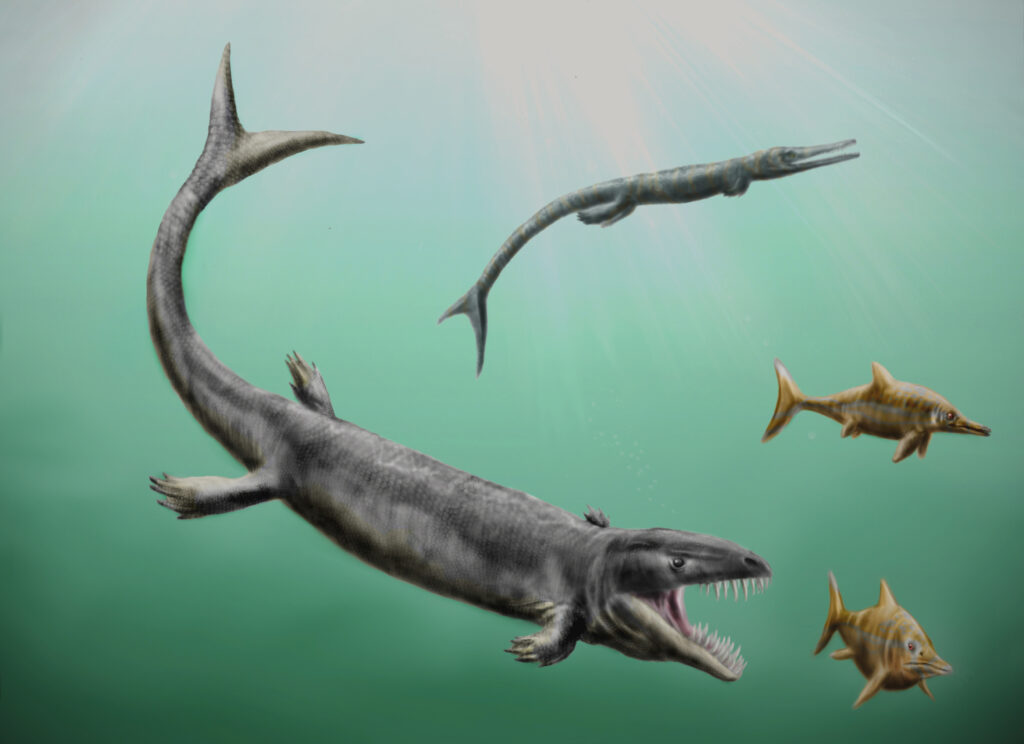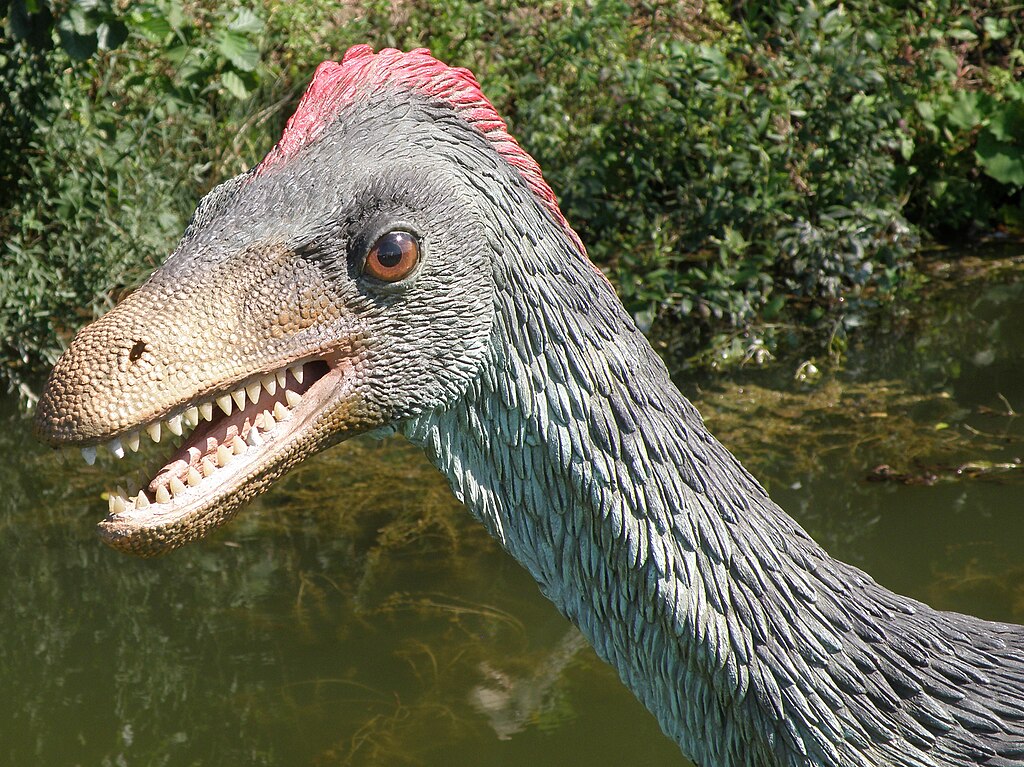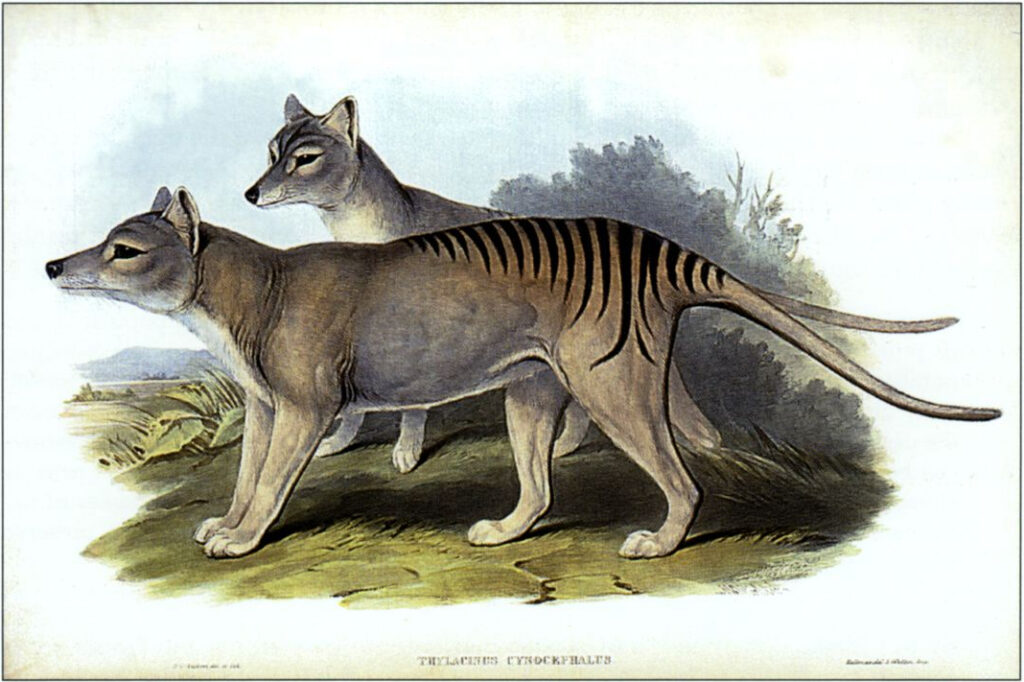Picture this: 70 million years ago, a massive serpentine creature slices through ancient seas with deadly precision. Its powerful jaws snap shut around a helpless ammonite, crushing the spiral shell like a walnut. This wasn’t just any prehistoric predator—this was a mosasaur, one of the most fearsome marine reptiles that ever lived. These ocean giants didn’t just survive in the Cretaceous seas; they completely revolutionized marine ecosystems in ways that still echo through evolutionary history today.
The Rise of Ocean Titans
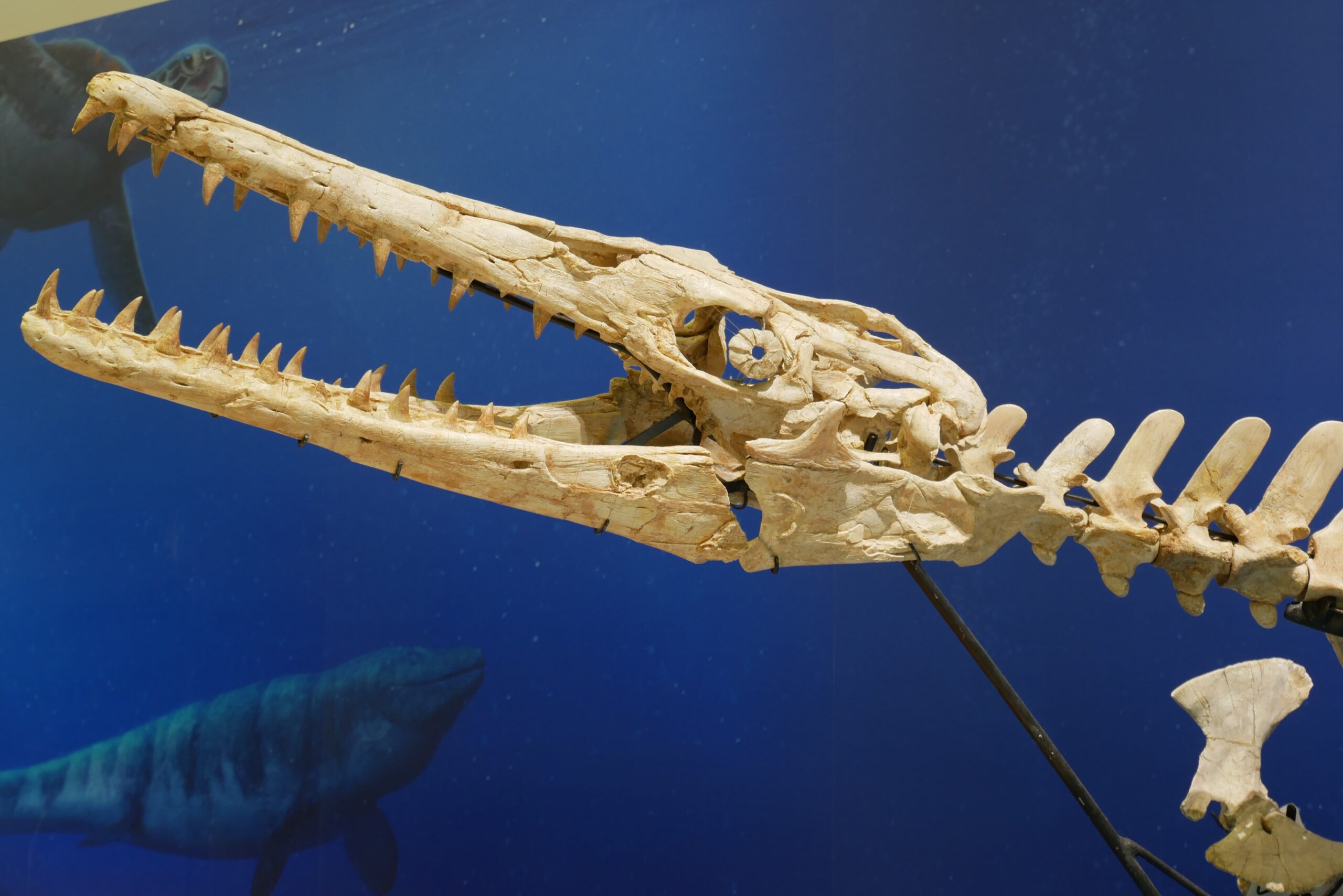
Mosasaurs emerged during the Late Cretaceous period, roughly 100 million years ago, filling a crucial ecological niche that had been vacant for millions of years. These marine reptiles evolved from terrestrial lizards, undergoing one of the most dramatic evolutionary transformations in Earth’s history. Their ancestors literally walked into the ocean and never looked back.
What makes their story even more remarkable is the speed of their evolution. Within just 35 million years, they went from small, shore-dwelling creatures to massive apex predators measuring up to 56 feet in length. This evolutionary sprint created some of the most specialized marine hunters the world has ever seen.
Masters of Aquatic Adaptation
The transformation from land to sea required incredible physiological changes that mosasaurs accomplished with stunning efficiency. Their limbs evolved into powerful flippers, perfectly designed for steering and maneuvering through water. Unlike their terrestrial ancestors, these creatures developed a shark-like tail fin that propelled them through the water with remarkable speed and agility.
Their skulls underwent dramatic restructuring, developing massive jaw muscles that could generate bite forces exceeding 40,000 pounds per square inch. This crushing power made them capable of breaking through the toughest shells and bones of their prey. Their teeth, sharp and recurved, were perfectly designed for gripping slippery marine creatures.
Diverse Species, Specialized Hunters
Not all mosasaurs were created equal—the group diversified into numerous species, each adapted for different hunting strategies and prey types. Tylosaurus, reaching lengths of up to 45 feet, was built like a living torpedo, designed for high-speed pursuits across open ocean. Its streamlined body and powerful tail made it the ultimate pursuit predator of the ancient seas.
On the other end of the spectrum, Globidens possessed rounded, crushing teeth that were perfect for cracking open shellfish and other hard-shelled prey. This specialization shows how mosasaurs filled multiple ecological niches, much like modern sharks do today. Some species even developed enhanced sensory organs that allowed them to hunt in murky waters or detect electrical fields from hidden prey.
Ecosystem Engineers of the Ancient Ocean
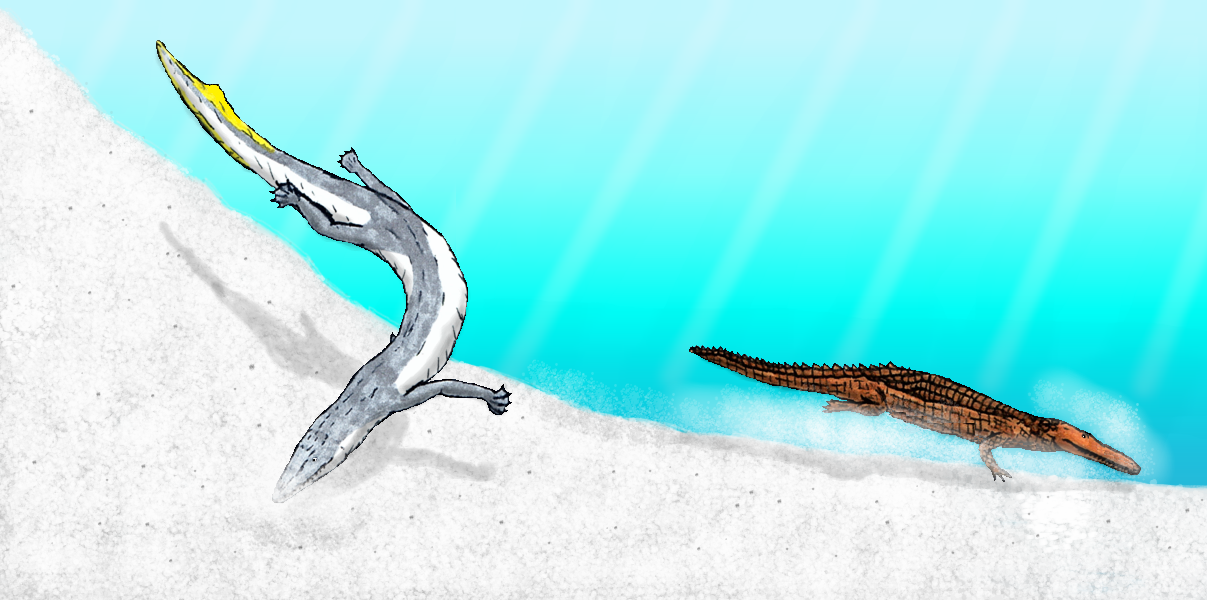
Mosasaurs didn’t just live in Cretaceous marine ecosystems—they fundamentally reshaped them through their presence and hunting behaviors. As apex predators, they controlled population sizes of various marine species, preventing any single group from dominating the food web. This top-down regulation created a more balanced and diverse marine community.
Their feeding habits also influenced the evolution of their prey species. Ammonites, for instance, developed thicker shells and more complex defensive strategies in response to mosasaur predation pressure. This evolutionary arms race drove innovation in both predator and prey lineages, accelerating the pace of marine evolution during the Cretaceous period.
The presence of mosasaurs also affected nutrient cycling in ancient oceans. Their massive bodies, when they died, provided enormous food sources for smaller marine organisms, creating localized ecosystems around their carcasses that could last for decades.
Breathing Revolution in Marine Reptiles
One of the most significant adaptations mosasaurs achieved was their respiratory system, which allowed them to remain submerged for extended periods while hunting. Unlike modern marine mammals that must surface regularly to breathe, mosasaurs developed highly efficient lungs and enhanced blood oxygen storage capabilities.
Their enlarged hearts pumped oxygen-rich blood throughout their massive bodies, while specialized muscle tissues could store oxygen for use during deep dives. This adaptation gave them a significant advantage over other marine reptiles of their time, allowing them to hunt in deeper waters and pursue prey for longer periods without needing to surface.
The Great Marine Migration
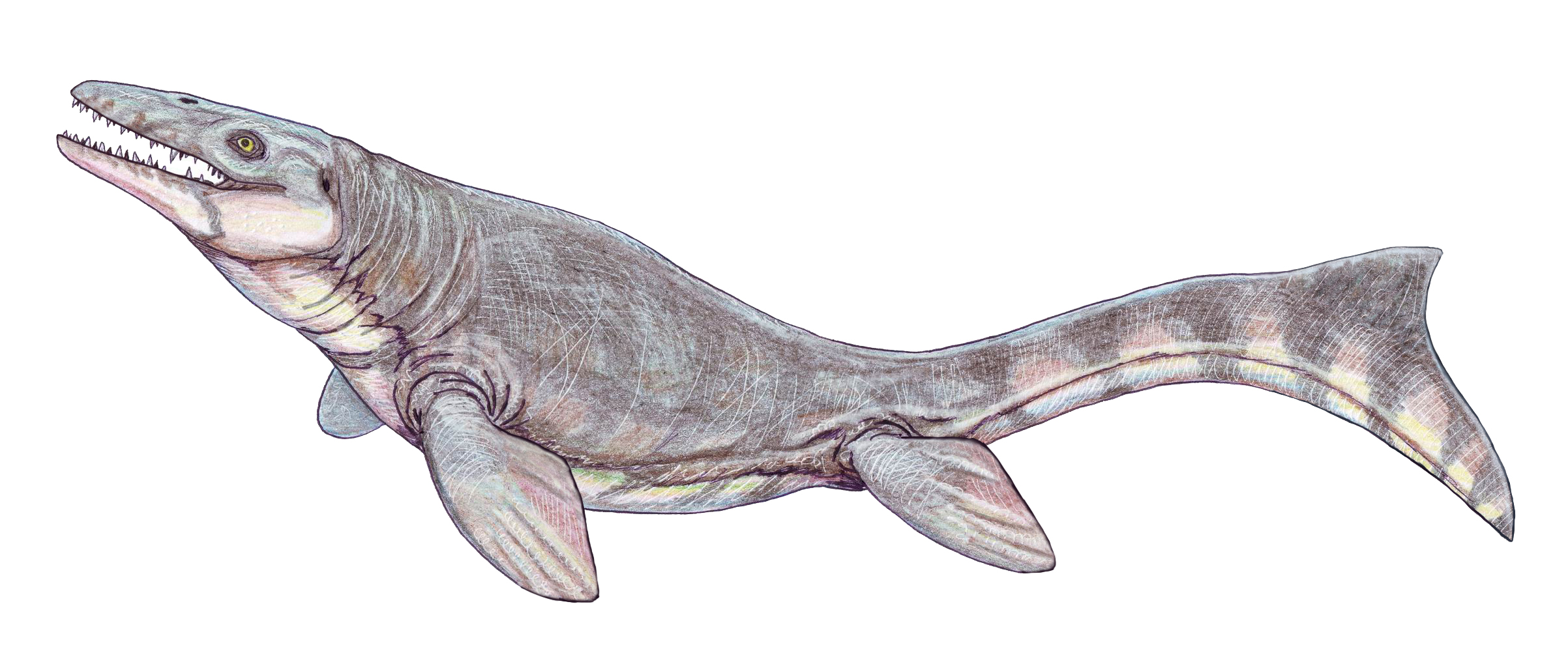
Evidence suggests that mosasaurs were among the first marine reptiles to undertake long-distance migrations, following prey movements and seasonal changes in ocean temperature. Fossil discoveries across different continents show that some species traveled thousands of miles across ancient ocean basins.
These migrations had profound effects on marine ecosystems, as mosasaurs transported nutrients and energy across vast distances. Their presence in different regions during different seasons created complex predator-prey dynamics that influenced the distribution and behavior of numerous marine species.
Social Behavior and Pack Hunting
Recent fossil evidence suggests that some mosasaur species may have engaged in coordinated hunting behaviors, similar to modern killer whales. Bite marks on large prey fossils indicate that multiple individuals sometimes attacked the same target, suggesting primitive pack hunting strategies.
This social behavior would have made them even more formidable predators, capable of taking down prey much larger than themselves. The ability to coordinate attacks also demonstrates a level of intelligence and communication that was previously unknown in marine reptiles of the Cretaceous period.
Impact on Marine Food Webs
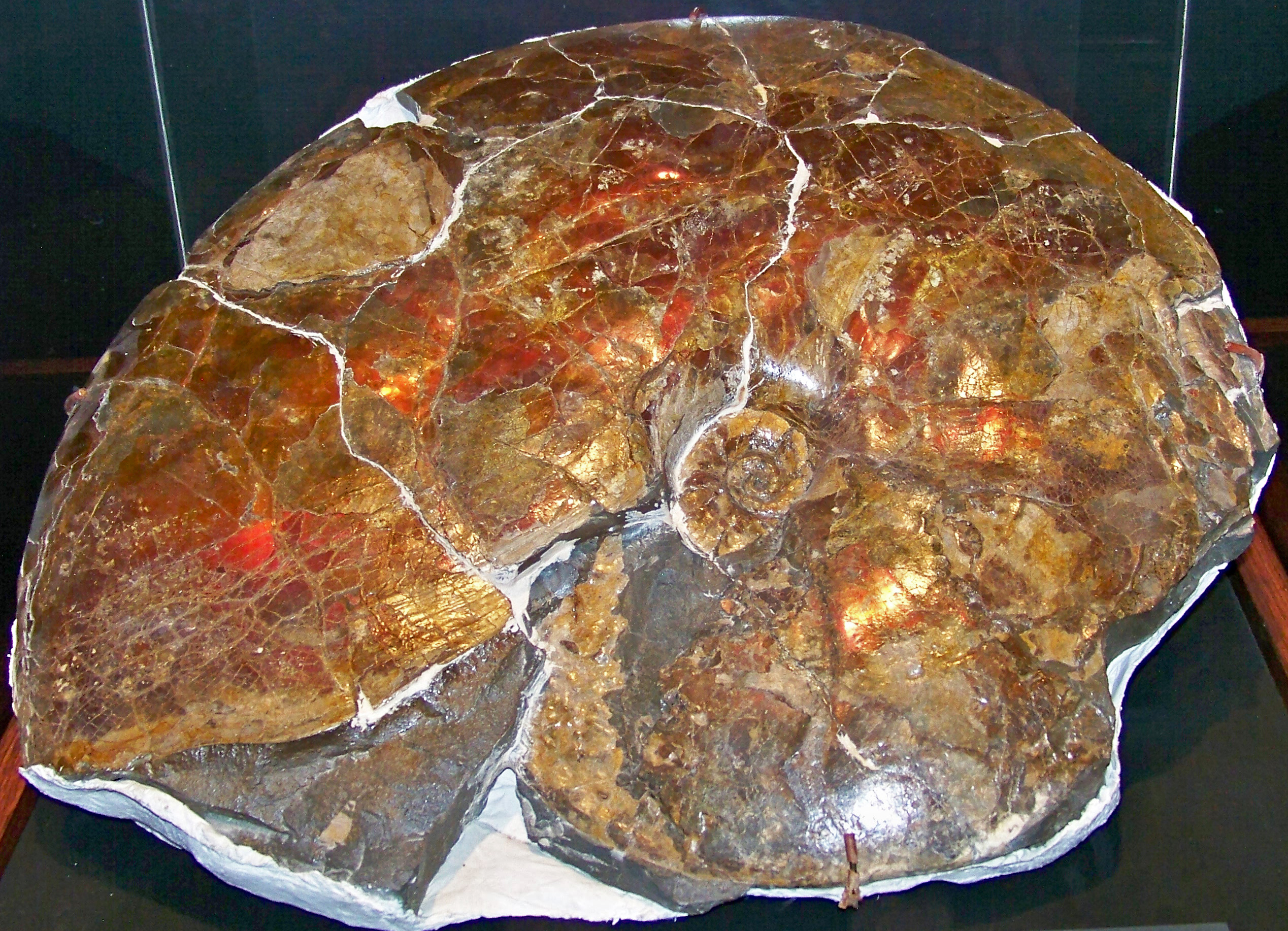
The presence of mosasaurs created cascading effects throughout Cretaceous marine food webs that extended far beyond their direct predation. By controlling populations of medium-sized marine reptiles and large fish, they indirectly influenced the abundance and distribution of smaller organisms throughout the ecosystem.
This top-down control helped maintain the delicate balance that allowed the incredible diversity of Cretaceous marine life to flourish. Without mosasaurs, the oceans might have been dominated by a few species, reducing overall biodiversity and ecosystem stability.
Competition with Other Marine Giants
Mosasaurs shared their ocean domain with other formidable predators, including plesiosaurs and large sharks, creating complex competitive relationships that shaped marine ecosystems. Unlike the long-necked plesiosaurs that relied on ambush tactics, mosasaurs were active pursuit predators that could outmaneuver most other marine reptiles.
This competition drove evolutionary innovation in all marine predator groups, leading to the development of specialized hunting strategies and ecological niches. The result was a more diverse and dynamic marine ecosystem than had ever existed before.
Global Ocean Influence

The impact of mosasaurs extended across all major ocean basins during the Cretaceous period, making them truly global ecosystem engineers. Their presence in the Western Interior Seaway of North America, the European seas, and the ancient Tethys Ocean demonstrates their worldwide influence on marine life.
Each regional population adapted to local conditions while maintaining their role as apex predators, creating variations in ecosystem structure across different ocean basins. This global presence meant that mosasaurs influenced marine evolution on a planetary scale.
Reproductive Strategies and Nursery Areas
Mosasaurs developed sophisticated reproductive strategies that included the establishment of nursery areas in shallow, protected waters. Young mosasaurs required safe environments to grow and develop their hunting skills before venturing into deeper, more dangerous waters.
These nursery areas became biodiversity hotspots, as the presence of juvenile mosasaurs created unique ecological conditions that supported diverse communities of smaller marine organisms. The protection these areas provided also influenced the distribution patterns of various marine species.
Chemical Warfare in Ancient Seas
Some mosasaur species developed specialized glands that could produce toxic or irritating chemicals, adding another dimension to their predatory arsenal. This chemical defense system not only helped them subdue prey but also deterred potential competitors and parasites.
The development of chemical warfare capabilities in mosasaurs represents one of the earliest examples of biochemical adaptation in marine reptiles. This innovation influenced the evolution of chemical defenses in their prey species and contributed to the complex biochemical interactions that characterized Cretaceous marine ecosystems.
Legacy in Modern Ocean Ecosystems
The evolutionary innovations developed by mosasaurs didn’t disappear with their extinction 66 million years ago. Many of their adaptations were later adopted by marine mammals, sharks, and other marine predators that filled similar ecological roles in post-Cretaceous oceans.
Modern marine ecosystems still bear the structural imprint of mosasaur influence, with similar top-down predator control mechanisms and complex food web relationships. The study of mosasaur ecology provides crucial insights into how modern marine ecosystems function and how they might respond to environmental changes.
The End of an Era
The extinction of mosasaurs at the end of the Cretaceous period marked the end of one of the most successful marine predator dynasties in Earth’s history. Their disappearance left a massive ecological void that took millions of years to fill, fundamentally altering the structure of marine ecosystems worldwide.
The loss of these apex predators triggered cascading effects throughout marine food webs, leading to population explosions in some species and the extinction of others. This ecological reorganization set the stage for the evolution of modern marine ecosystems and the rise of marine mammals as the dominant ocean predators.
Understanding how mosasaurs shaped ancient ocean life provides valuable insights into the importance of apex predators in maintaining ecosystem balance and biodiversity. Their legacy reminds us that even the most successful species can disappear, taking with them the complex ecological relationships they helped create over millions of years of evolution.

